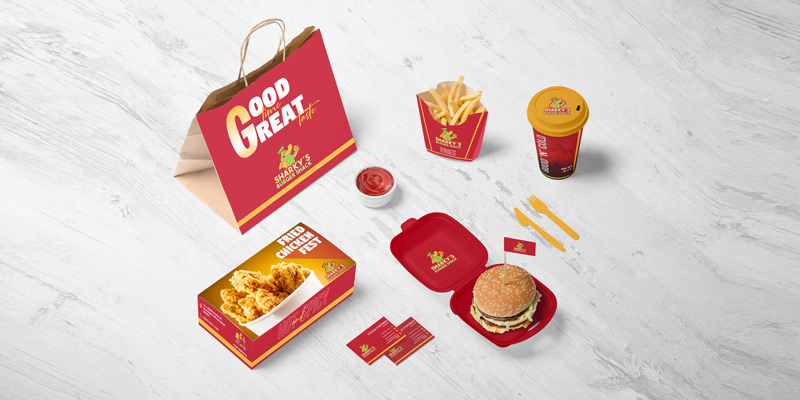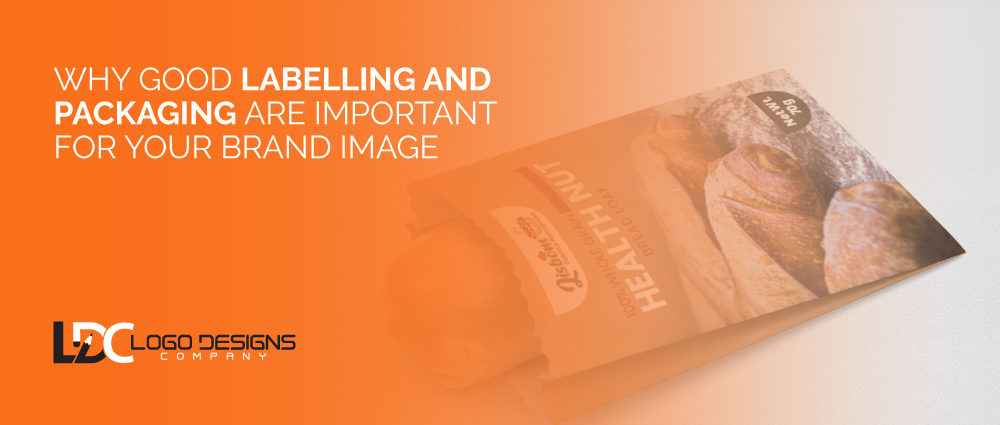The quality of the product is more essential than its presentation, or packaging, as any expert marketer or regular customer will tell you. It’s harder than ever to stand out on store shelves these days, yet there are always bright examples that successfully combine creativity with usefulness.
Branding and logo design services are immensely helpful on a purely functional basis. The truth is that most supermarket items, with the exception of a few items like a bunch of bananas, that we can pick up and carry home in our own bag, are packaged or labeled in some way.
In fact, if you’re purchasing bananas from a supermarket, it’s likely that a price label will be necessary. And after weighing the bananas, you’ll attach that label to them. A label with the producer’s emblem, like the one in the right image, might already be present on bananas.
It is safe to conclude that packaging and labeling are ubiquitous and that despite our belief that we might survive without elegant boxes, their importance is more than we may realise.
Consider this:
To get the newest phone, you have been saving money. After paying at the store when you finally do, they hand you the phone without a box. You quickly take it and place it in your pocket. Not all that intriguing, do you think? In actuality, your recent client experience was really disappointing. According to Statista, the European printed packaging industry was anticipated to expand across various segments.
This is nothing in comparison to the actual unwrapping event you have been anticipating for so long. The beautiful sensation of opening a brand-new phone is the result of saving money to buy one. You pull the phone from its perfectly-fitting spot after tearing off the external foil and opening the two-piece box. Everything in the box fits and is positioned correctly.
There are three layers of packaging you can use, and labeling and packaging are important for any firm.
-
The Original or Primary Packing


This packaging, which is often referred to as retail packaging, makes direct touch with the product. According to the product, the basic package may change. The cream jar serves as the main packaging for face cream. The bag that the candies come in serves as their main packaging. The beer can serves as the principal packaging for beer.
A personalised label may also be used on primary packaging.
-
Secondary Packaging
When shipping, carrying, or selling things that already have a main package. Like the candy I mentioned, which come in a larger bag, secondary packaging is employed. The shrink-wrap that covers the 6-pack or carton carrier in the case of the beer can is considered secondary packaging. For an oil dropper bottle, the dropper bottle box serves as additional packaging.
-
Tertiary Packing


Except when they buy in quantity, customers rarely notice the tertiary packing. By combining several products, it is primarily used to safeguard the items during transportation and storage. Additionally, it makes handling and shipment simpler. The tertiary packaging for beer can be a larger cardboard box that holds numerous 6-packs or a wood pallet that transports a substantial stack.
Although secondary packaging is not always customised, most businesses decide to include some branding and digital marketing services for simpler identification.
All three tiers of packaging are crucial for your company, but we’ll concentrate on the first two because they’re the ones that customers will engage with and have the biggest influence over how they view your brand.
But hold on!
Let’s look at the practical parts of packaging and why they are important before discussing why you should see your packaging and labeling as an extension of your product.
Information Is Provided By Packaging and Labelling
Details about your product that potential customers need to know in order to choose it must be included on the packaging and labeling services.
Use the following questions to ensure you offer the correct details, and try to include the message into your custom box, custom label, or both. If the information isn’t clear or clients can’t determine whether your product fits their needs, even a beautifully printed package can turn them away.
Your potential buyer must rapidly decide the answers to these questions by perusing your box and label.
-
Who produced the item?
Your brand’s insignia should be able to answer this question clearly; thus it should be easy to read.
-
The product is for whom?
Are you marketing this product to men, women, kids, or a certain niche? This message can be conveyed using the text that displays on the box, the colours you choose, and the design elements you choose.
-
Where was the item produced?


Particularly when it comes to food or cosmetics, people should be conscious of where their possessions come from. It should be adequate to just state “Made in the USA”, “Created in Oregon” or something similar.
-
What are the ingredients and how much (if any) are there?
There are several guidelines and regulations you must follow, and listing the ingredients is a very significant aspect. I’ll discuss this further below.
Conclusion
Packaging serves considerably more purposes than merely safeguarding a product. It is a crucial marketing tool that promotes branding, highlights the best qualities of the product, and gives customers an unforgettable experience. It’s a doorway that can take your company and goods to new heights. As you see, branding gives life to a product and its brand, now if you are looking for branding and logo design services related to packaging, labeling, and corporate promotional items get in touch with LogoDesignsCompany.


